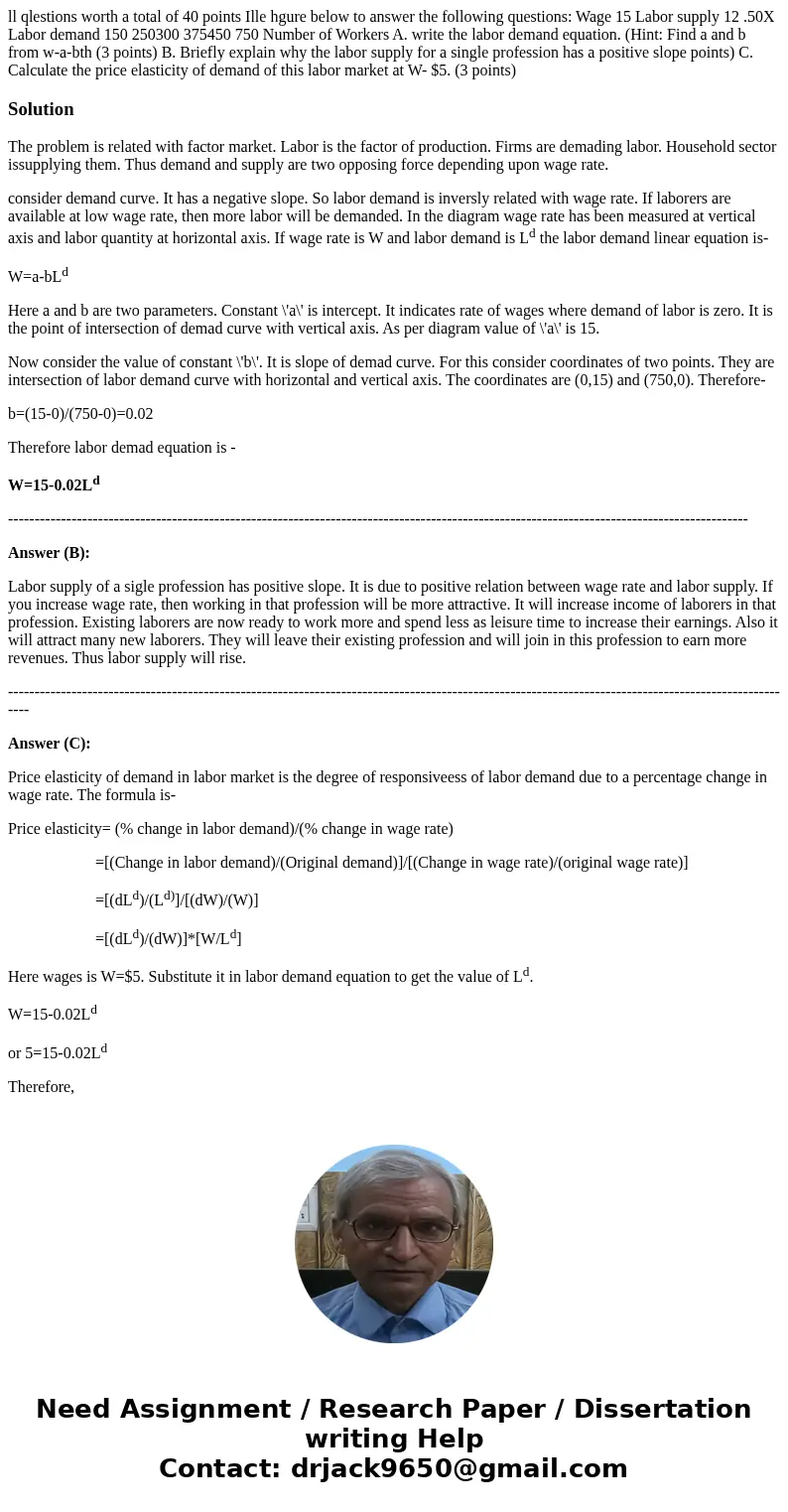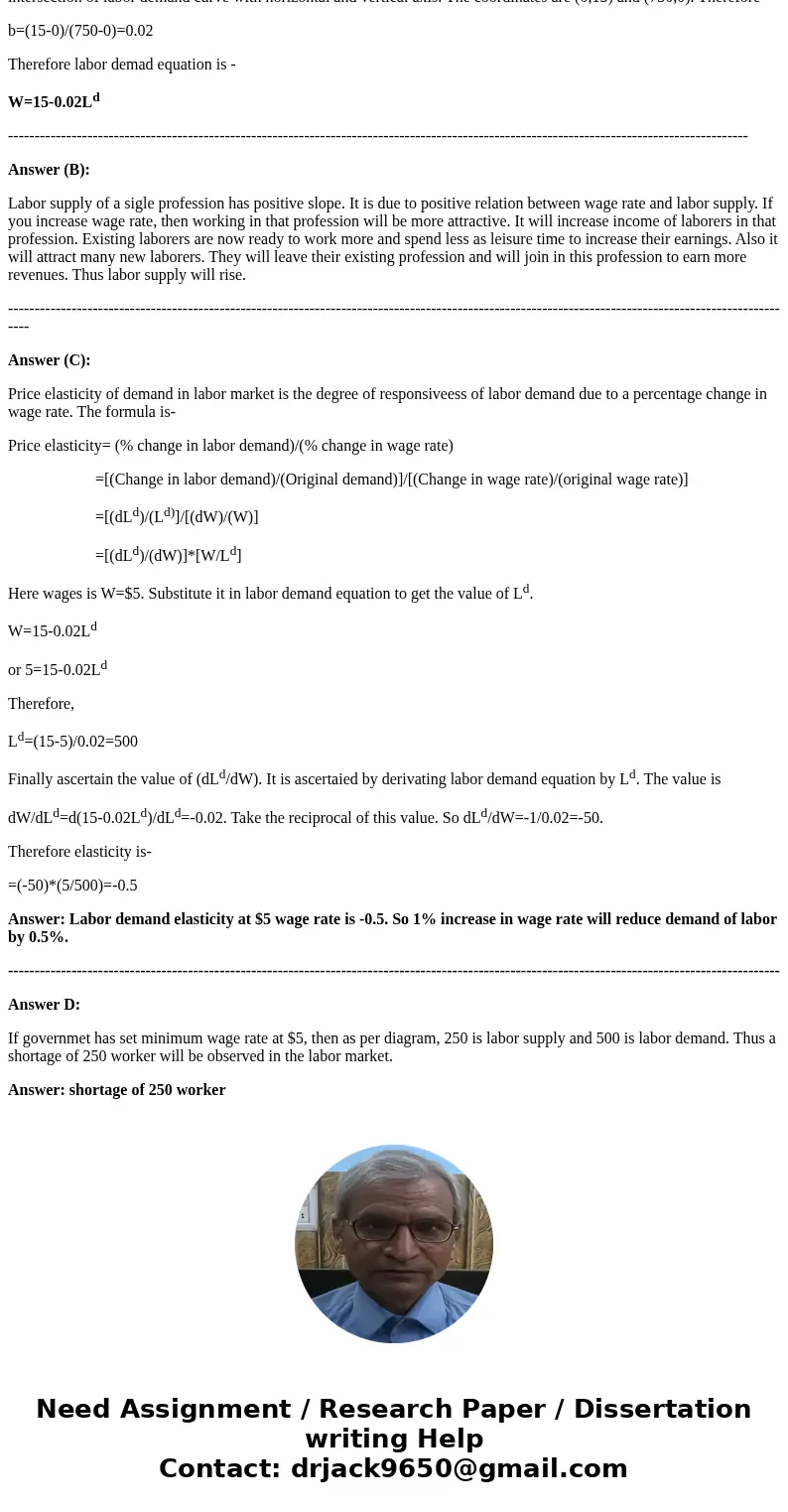ll qlestions worth a total of 40 points Ille hgure below to
Solution
The problem is related with factor market. Labor is the factor of production. Firms are demading labor. Household sector issupplying them. Thus demand and supply are two opposing force depending upon wage rate.
consider demand curve. It has a negative slope. So labor demand is inversly related with wage rate. If laborers are available at low wage rate, then more labor will be demanded. In the diagram wage rate has been measured at vertical axis and labor quantity at horizontal axis. If wage rate is W and labor demand is Ld the labor demand linear equation is-
W=a-bLd
Here a and b are two parameters. Constant \'a\' is intercept. It indicates rate of wages where demand of labor is zero. It is the point of intersection of demad curve with vertical axis. As per diagram value of \'a\' is 15.
Now consider the value of constant \'b\'. It is slope of demad curve. For this consider coordinates of two points. They are intersection of labor demand curve with horizontal and vertical axis. The coordinates are (0,15) and (750,0). Therefore-
b=(15-0)/(750-0)=0.02
Therefore labor demad equation is -
W=15-0.02Ld
--------------------------------------------------------------------------------------------------------------------------------------------
Answer (B):
Labor supply of a sigle profession has positive slope. It is due to positive relation between wage rate and labor supply. If you increase wage rate, then working in that profession will be more attractive. It will increase income of laborers in that profession. Existing laborers are now ready to work more and spend less as leisure time to increase their earnings. Also it will attract many new laborers. They will leave their existing profession and will join in this profession to earn more revenues. Thus labor supply will rise.
------------------------------------------------------------------------------------------------------------------------------------------------------
Answer (C):
Price elasticity of demand in labor market is the degree of responsiveess of labor demand due to a percentage change in wage rate. The formula is-
Price elasticity= (% change in labor demand)/(% change in wage rate)
=[(Change in labor demand)/(Original demand)]/[(Change in wage rate)/(original wage rate)]
=[(dLd)/(Ld)]/[(dW)/(W)]
=[(dLd)/(dW)]*[W/Ld]
Here wages is W=$5. Substitute it in labor demand equation to get the value of Ld.
W=15-0.02Ld
or 5=15-0.02Ld
Therefore,
Ld=(15-5)/0.02=500
Finally ascertain the value of (dLd/dW). It is ascertaied by derivating labor demand equation by Ld. The value is
dW/dLd=d(15-0.02Ld)/dLd=-0.02. Take the reciprocal of this value. So dLd/dW=-1/0.02=-50.
Therefore elasticity is-
=(-50)*(5/500)=-0.5
Answer: Labor demand elasticity at $5 wage rate is -0.5. So 1% increase in wage rate will reduce demand of labor by 0.5%.
--------------------------------------------------------------------------------------------------------------------------------------------------
Answer D:
If governmet has set minimum wage rate at $5, then as per diagram, 250 is labor supply and 500 is labor demand. Thus a shortage of 250 worker will be observed in the labor market.
Answer: shortage of 250 worker


 Homework Sourse
Homework Sourse